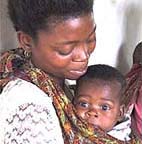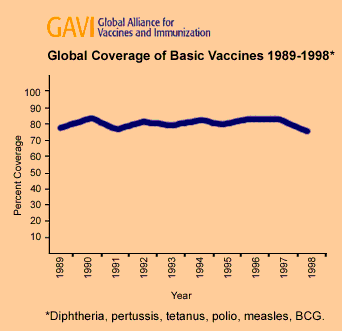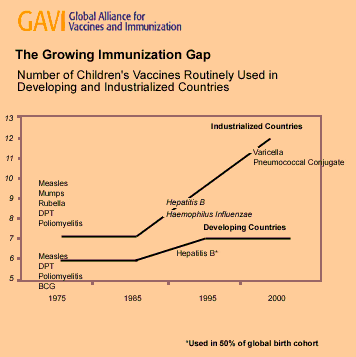|
||||

|
|
||||||||||||||||||||||||||||||||||||||||||||||||||||||||
|
Global Immunization Challenges One in four children is excluded Despite the spectacular gains achieved by the WHO’s Expanded Programme for Immunization during the 1980s, one in four children did not receive routine immunization with the six basic vaccines against polio, diphtheria, whooping cough, tetanus, measles and tuberculosis in 1998, according to WHO figures. The proportion of children immunized each year against these six diseases is currently declining. Whereas the reported total was about 80 per cent in 1990 it fell to 74 per cent in 1998.
Global statistics from eight vaccine-preventable diseases
The ’vaccine gap’ between rich and poor children is widening Beyond the six basic vaccines, newer vaccines, such as those for hepatitis B, Haemophilus influenzae B (Hib), and yellow fever are now widely used in developed countries. While children in developing countries may have access to six or seven vaccines, their peers in industrialized countries can now expect to receive 11 or 12. Thus the gap between rich and poor children is widening.
(Source:The World Bank) As well as the challenges of increasing access to existing vaccines, there are additional challenges for research and development. For example, HIV, tuberculosis and malaria now cause a combined annual death toll of about 5 million yet, despite promising leads, no vaccines against HIV and malaria have yet been licensed and additional vaccines against TB are urgently needed. Selected major killers not yet preventable by immunization
Source: WHO 1999
|
||||||||||||||||||||||||||||||||||||||||||||||||||||||||
| Contact GAVI | Guestbook | Text version | Credits and Copyright | ||||||||||||||||||||||||||||||||||||||||||||||||||||||||


